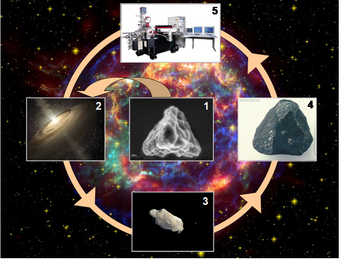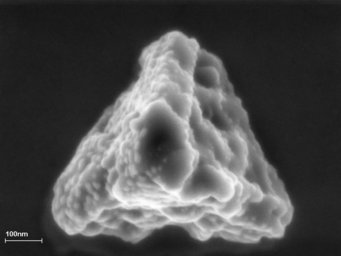Research
Stardust in Primitive Solar System Materials
Primitive meteorites, interplanetary dust particles (IDPs), and cometary matter returned to Earth by NASA’s Stardust mission contain small quantities (ppb-ppm) of so-called presolar grains which are older than our Solar System and which formed in the winds of evolved stars and in the ejecta of stellar explosions (Fig. 1). These pristine samples represent stardust which can be analyzed with high precision in the laboratory. Their isotopic compositions and mineralogical properties provide a wealth of information on many astrophysical aspects such as stellar nucleosynthesis and evolution, Galactic chemical evolution, grain growth in stellar environments, interstellar chemistry, and on the inventory of stars that contributed dust to the Solar System. Stardust grains identified to date include silicon carbide (SiC, Fig. 2), graphite, silicon nitride (Si3N4), refractory oxides (e.g., Al2O3 and MgAl2O4), and silicates. The most refractory of these grains can be separated by chemical and physical treatments. This holds, e.g., for SiC, the best studied presolar mineral phase. Silicates, on the other hand, are destroyed by the chemical treatments used to isolate presolar grains from meteorites. Presolar silicates can be found by high-resolution O-isotopic mapping of thin sections of primitive Solar System materials in the Cameca NanoSIMS 50 ion probe because they are tagged by large O-isotopic anomalies (Fig. 3).
The isotopic compositions of the major and of the most abundant trace elements in submicrometer- and micrometer-sized grains can be measured by secondary ion mass spectrometry (SIMS). Our institute operates a Cameca NanoSIMS 50 ion probe which permits isotope studies with 50 nanometer spatial resolution. The invention of the NanoSIMS has opened a new window to astronomy at the beginning of this millenium. Examples for important breakthroughs are: (i) Discovery of silicate stardust in interplanetary dust particles and primitive meteorites. (ii) Extension of isotopic studies to submicrometer-sized presolar grains. (iii) Identification of isotopic heteorogeneities within individual, micrometer-sized presolar grains. (iv) Coordinated NanoSIMS-TEM studies made it possible to obtain simultaneous information on the mineralogy and isotopic composition of presolar materials.
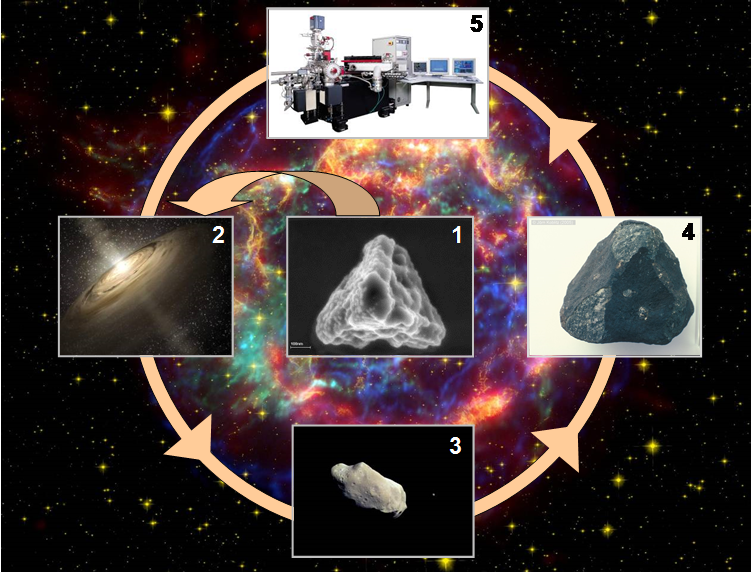
Figure 1. The different phases in the life cycle of presolar (stardust) grains: (1) Formation around evolved stars. (2) Passage through the interstellar medium and incorporation into the molecular cloud from which our Solar System formed. (3) Survival inside small planetary bodies (asteroids, comets). (4) Transport to the Earth by meteorites or sample return missions. (5) Isotopic and mineralogical studies in terrestrial laboratories. Picture credits: NASA/JPL-Caltech (2), NASA/JPL (3), J. Koblitz (4), NASA/JPL-Caltech/STScl/Cxc/SAO (background).
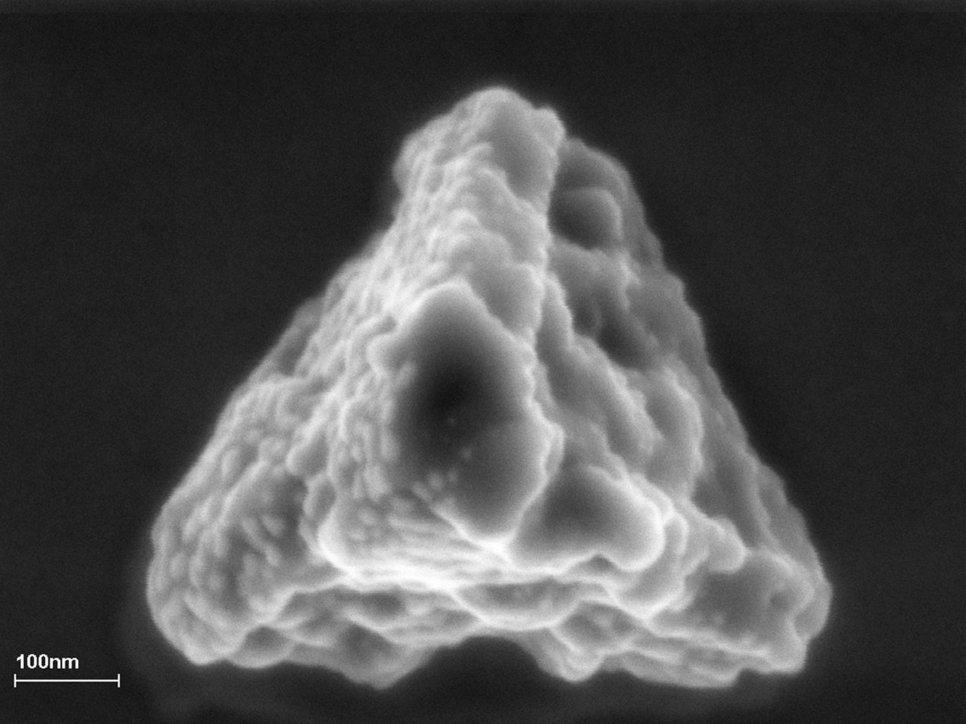
Figure 2. SEM photograph of a presolar silicon carbide grain from the Murchison meteorite. This grain is less than 1 micrometer in size and formed more than 4.57 billion years ago most likely in the wind of a red giant star. Photo: MPI Chemistry.
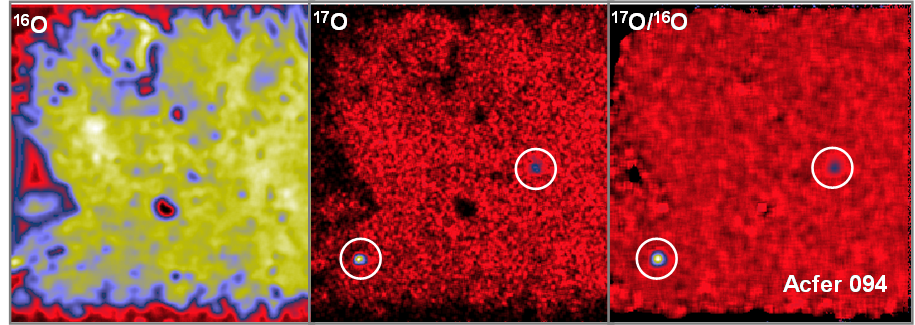
Figure 3. 16O, 17O, and 17O/16O ion images of a 9 x 9 µm2-sized area in the matrix of the Acfer 094 meteorite. Two presolar silicate grains, about 300 nm in size, can be recognised by large enrichments in 17O (white and blue hotspots, respectively. Images: MPI Chemistry.
Selected Publications:
- Hoppe P., Cohen S., and Meibom A. (2013) NanoSIMS: Technical aspects and applications in cosmochemistry and biological geochemistry. Geostandards Geoanalytical Res. 37, 111-154.
- Hoppe P., Leitner J., and Kodolányi J. (2017) The stardust abundance in the local interstellar cloud at the birth of the Solar System. Nature Astronomy 1, 617-620.
- Kodolányi J., Vollmer C., Hoppe P. and Müller M. (2018) Structural investigation of silicon carbide X grains: Constraints on condensation in supernova ejecta. Astrophys. J. 868, 34 (28pp).
- Leitner J. and Hoppe P. (2019) A new population of dust from stellar explosions among meteoritic stardust. Nature Astronomy 3, 725-729.
